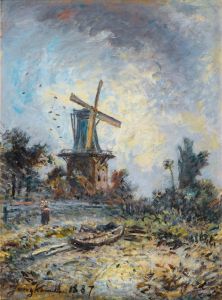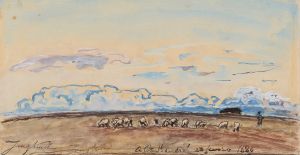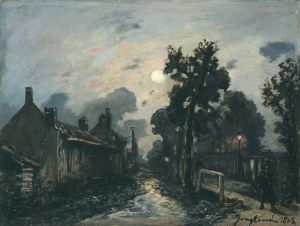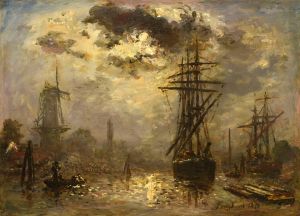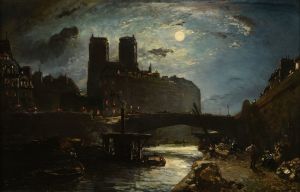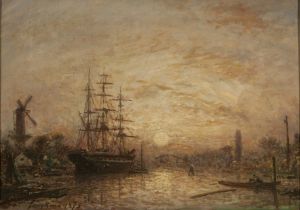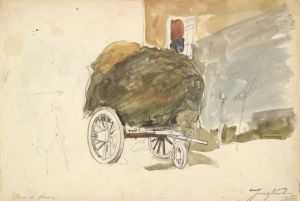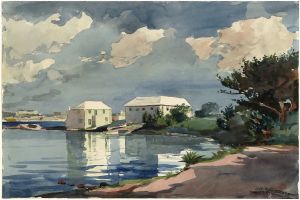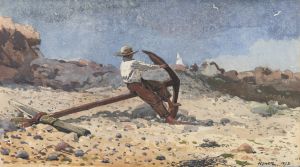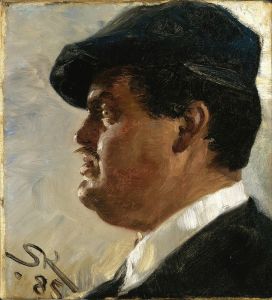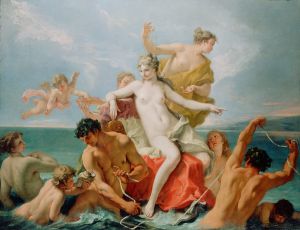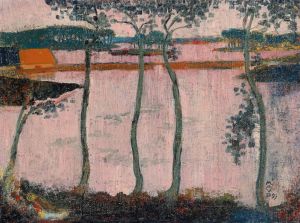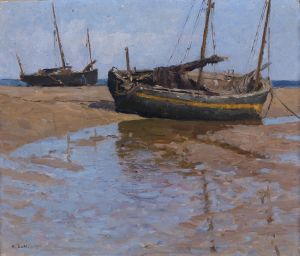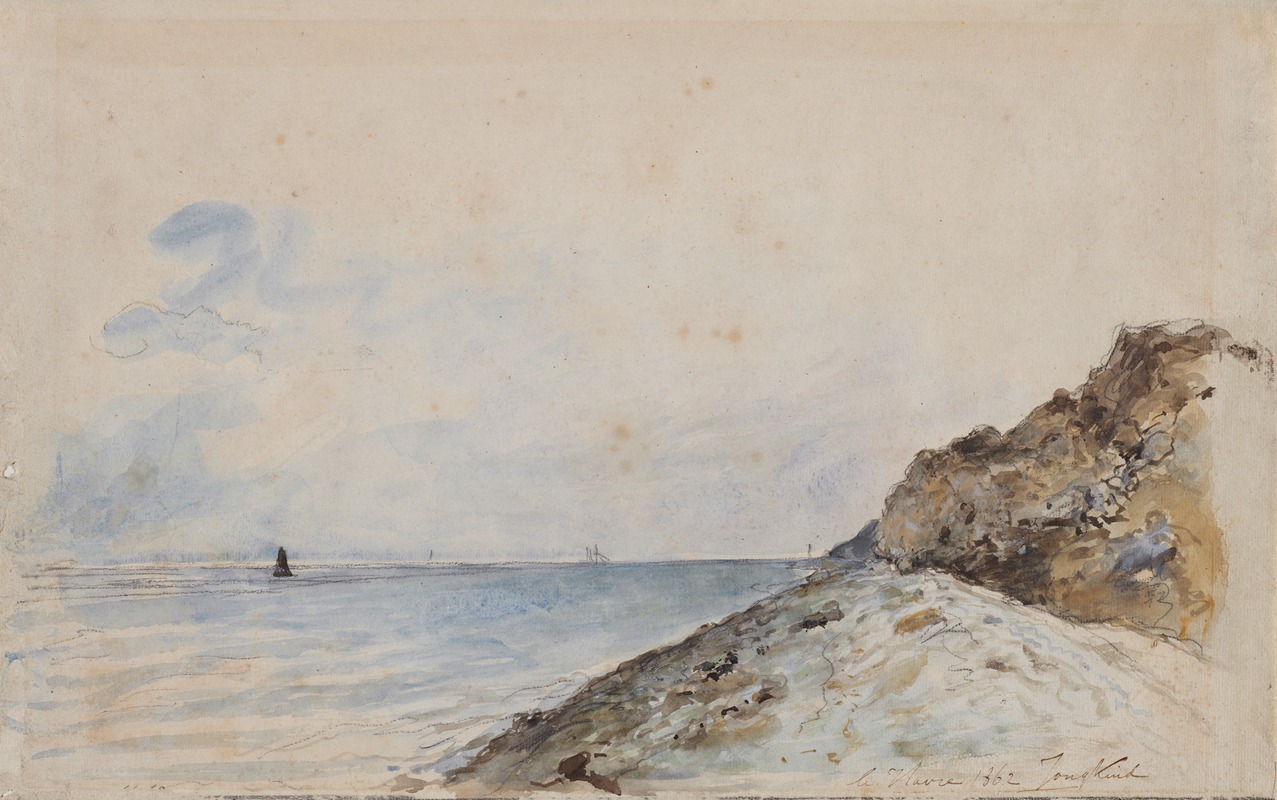
Le Havre
A hand-painted replica of Johan Barthold Jongkind’s masterpiece Le Havre, meticulously crafted by professional artists to capture the true essence of the original. Each piece is created with museum-quality canvas and rare mineral pigments, carefully painted by experienced artists with delicate brushstrokes and rich, layered colors to perfectly recreate the texture of the original artwork. Unlike machine-printed reproductions, this hand-painted version brings the painting to life, infused with the artist’s emotions and skill in every stroke. Whether for personal collection or home decoration, it instantly elevates the artistic atmosphere of any space.
Johan Barthold Jongkind, a Dutch painter and printmaker, is often associated with the development of Impressionism due to his innovative approach to landscape painting. One of his notable works is "Le Havre," which captures the essence of the bustling port city in France. Jongkind was known for his ability to depict light and atmosphere, and "Le Havre" is a testament to his skill in these areas.
Jongkind was born in the Netherlands in 1819 and later moved to France, where he became an influential figure in the art world. His work was characterized by a keen observation of nature and a unique ability to capture transient effects of light and weather. "Le Havre" is a prime example of his technique, showcasing his adeptness at rendering the interplay between sky, sea, and the urban environment.
The painting "Le Havre" is believed to have been created during one of Jongkind's many visits to the port city, which was a significant hub of commerce and trade in the 19th century. The city of Le Havre, located in the Normandy region of France, provided Jongkind with ample inspiration due to its dynamic maritime activity and changing weather conditions. His depiction of Le Havre often includes elements such as ships, docks, and the bustling life of the port, all rendered with a sense of immediacy and movement.
Jongkind's technique involved the use of loose brushwork and a bright palette, which were somewhat revolutionary at the time and paved the way for the Impressionist movement. His ability to capture the fleeting effects of light on water and sky was particularly admired by his contemporaries and later artists. In "Le Havre," Jongkind's brushstrokes convey the shimmering reflections on the water and the atmospheric effects of the sky, creating a vivid and lively scene.
The influence of Jongkind's work on the Impressionists, particularly Claude Monet, is well-documented. Monet himself acknowledged Jongkind as a mentor and credited him with teaching him the importance of capturing light and atmosphere in painting. Jongkind's approach to plein air painting, or painting outdoors, was also a significant influence on the Impressionists, who adopted this method to capture the natural world with greater immediacy.
"Le Havre" exemplifies Jongkind's contribution to the evolution of landscape painting in the 19th century. His innovative techniques and focus on the effects of light and weather helped to shift the focus of landscape painting from the idealized and static to the dynamic and real. Jongkind's work remains an important link between the Romantic landscape tradition and the Impressionist movement that followed.
In summary, Johan Barthold Jongkind's "Le Havre" is a significant work that highlights his mastery of light and atmosphere. Through his depiction of the vibrant port city, Jongkind not only captured a moment in time but also laid the groundwork for future developments in art. His influence on the Impressionists and his role in the transition to modern landscape painting make "Le Havre" an important piece in the history of art.






